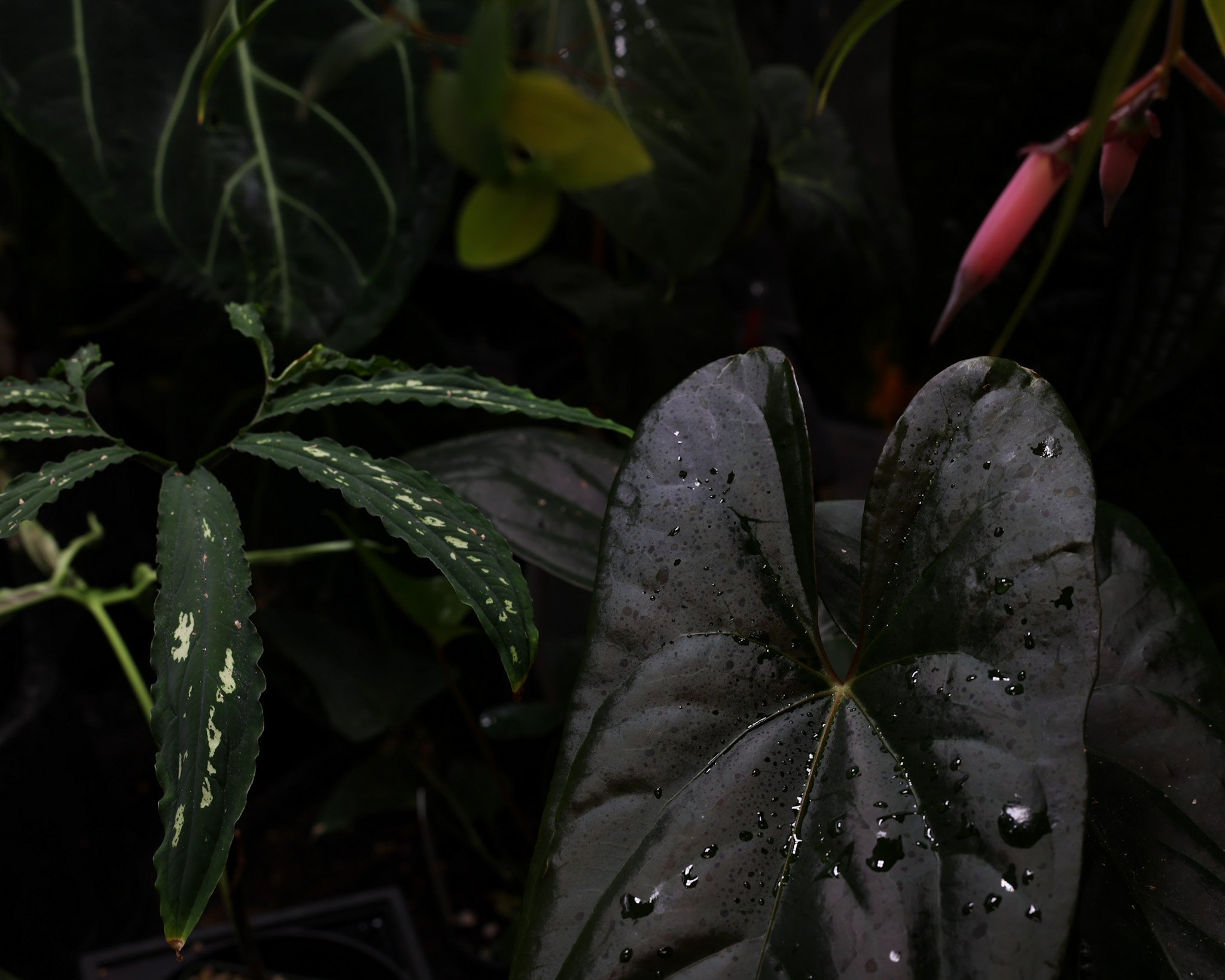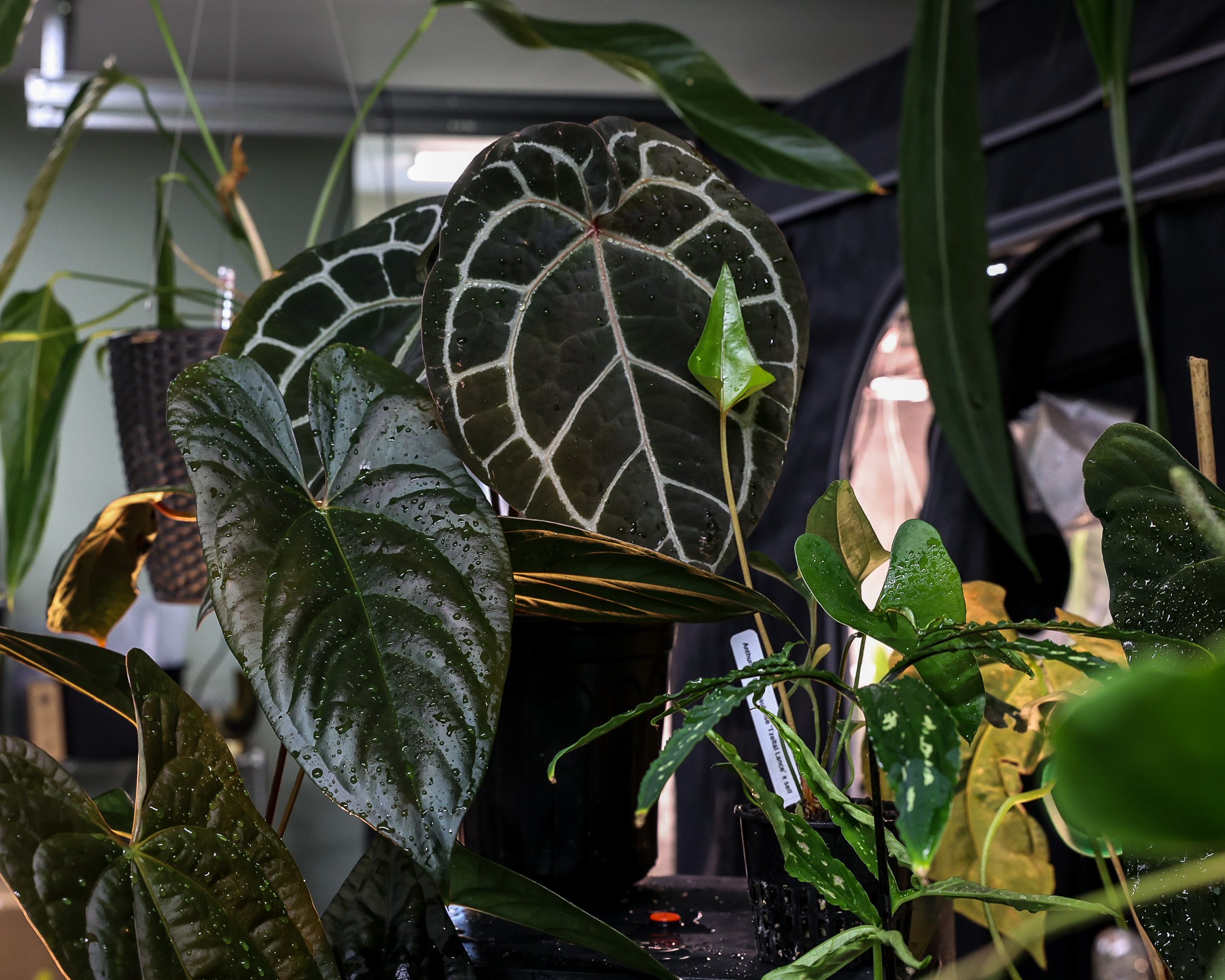Gothic Exotica
In a world of the dark and velvet; Anthurium Curandero is a bit different. This thing grows fast, has long erect petioles, and is quite possibly the darkest plant I’ve ever seen in real life. Jay has said to me that he believes these will make nice houseplants in maturity and I believe it will help provide a gothic-dramatic-exotic vibe to any space. We’ve been growing these here in the Garage Tropics darkness lab in a variety of conditions with great success. In pon in ambient, Curandero grows. In the humid laden darkness of the darkness lab here in NC this novel hybrid produces dramatic, bat-wing-esque foliage, though a little smaller than when given medium (300fc) light.
First the cross itself: this is a hybrid of a very interesting Peruvian species and the classic A. Papilliaminum ‘Ft Sherman’. If you have never seen pap ‘Ft Sherman’ I’ve provided an image of my selfling below. The dark velvet leaves with pink abaxial leaf surface make pap ‘FS’ a great candidate for any hybrid. The seed parent is A. sp. nov. aff. nigrolaminum Rimachii that grows over 4’ ft tall with maroon hexagonal winged petioles and an erect growth habit. This species will be grouped with two other related plants from the same region, one of which Jay says grew in actual standing water. These three plants sp. nov. aff nigrolaminum will be added to the ms Rimachii in honor of the field botanist Manuel Rimachi who made an earlier collection in the area. M. Rimachi is a plant collector with over 40 years experience that has worked extensively in Peru and greatly expanded the understanding of the flora of Amazon (Croat cate-araceae.myspecies.info). Jay really created something uniquely fun to grow by combining sp. nov. aff. Rimachii with pap ‘Ft Sherman’.
Why I like growing Curandero: Getting new leaves on your plants is a great way to feel validated as a grower-hobbyist. We spend a lot of time and money on these tropical obsessions, and some are shall we say, “less than vigorous”—not Curandero! This cross is a great example of hybrid vigor at work, giving hobbyists new leaves every couple weeks. So, ease of growth is definitely a factor when I consider A. Curandero as a collector. Equally as inviting is the prospect of being able to grow this big, dark monster in my living room. I’m really at a place where I want to be able to spend time with my plants, and Curandero being able to withstand ambient conditions (mine has been out of the tent for three weeks now and hasn’t missed a beat in 30%RH) means this one can be a home decor statement for those intrigued by the gothic exotic!





